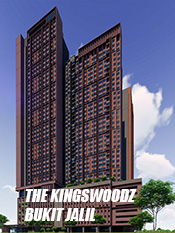
The strengthening ringgit is encouraging Malaysians to invest in overseas properties. — AFP
MALAYSIANS with deep pockets are making inroads into overseas property markets, especially in the United Kingdom and Australia, to take advantage of the low prevailing prices and potential for capital appreciation.
Property consultants and agents have reported a growing interest in overseas properties.
“Melbourne and Sydney have seen strong foreign demand over the last 18 to 24 months. However, due to the recent crisis in Europe, some funds have already divested out of Australia. In the UK, especially London, demand is strong from foreign high net worth individuals and private and sovereign funds,” CB Richard Ellis (CBRE) Malaysia executive director Paul Khong tells StarBizWeek in a recent interview.
“We are seeing a positive trend of Malaysians heading overseas to the UK, Australia and even Singapore. Large funds like Permodalan Nasional Bhd (PNB), the Employees Provident Fund (EPF), Tabung Haji and Kumpulan Wang Persaraan are moving overseas and even private sector players TA group, SP Setia, Glomac and many more are heading in that direction.
“On the residential front, we also see strong interests from individual investors continuing through to 2012,” he says.
Khong says the pulling factor attracting locals to venture and invest in overseas properties is the strengthening ringgit factor given that the pound sterling is trading below RM5 along with more upcoming attractive launches.
According to him, a key survey from Nationwide indicated that house prices in the UK fell 0.6% in August from July with an average price of a home costing about 165,900 (RM822,860).
In Australia, he says although the currency is getting a “little expensive”, there are still good assets in the market for investment.
“Brisbane is one of the fastest growing regions in Australia with a high population growth, and with the mining and resources boom, it will continue to enjoy a massive injection of government funds to ramp up mining related civil construction,” he says, adding that in Gold Coast, the market is much softer due to a slight oversupply.
“In Australia, investment grade assets give attractive yields of more than 7% with a fixed yearly increment, compared to the UK at about 6% or less,” he says.

Hahn: ‘The attraction to investing overseas is the opportunity to balance a portfolio of investments.’
He advises investors putting their money into foreign properties to do extensive research on their targeted investments before proceeding.
“Investing anywhere is how one views and predicts the property market in that particular location and time. The principle is, of course, to “buy low and sell high”. This billion-dollar question is difficult to answer.
“We predict that with the weak pound now and the worsening market conditions in Europe, London is a good destination to head to, but the crucial decision is on the type, location and quality of asset being considered and the final purchase price being agreed upon. Reference must be made to both exchange rate and yields,” Khong stresses.
Last year, international property consultancy group CB Richard Ellis accounted for 44% of the total investment transactions worth 5.18bil in the London investment market in 2010, including the transaction of EPF's 1 Sheldon Place.
Savills Rahim & Co head of overseas business development Christopher Hahn concurs that there is an increasing trend of Malaysians buying overseas property, and it is likely that interest will grow in North America also, but mainly from very experienced investors.
“The attraction to investing overseas is the opportunity to balance a portfolio of investments that probably includes investments in Malaysia. As we are still in a recession, that means better currency exchange rates, lower prices and more distressed sellers,” he says.
He says the attraction of foreign property has been amplified by the strength of the ringgit combined with a drop in capital values.
He says the overall market outlook in Australia and UK is bad, and only gateway cities like London, Sydney, Melbourne are doing well.
Hahn says Malaysians are attracted to these gateway cities as they are more familiar with them given the strong business and historical ties and a similar legal system with Malaysia which makes investment easier.
“The economic uncertainties should not deter people from investing overseas because the fundamental benefit of investing in property (instead of stocks or high interest account) is still sound,” he says.
He notes that most investors are interested in the good capital appreciation which in hot mature markets should average 10% a year over a 10-year period, while rental yields will be usually much lower.
“The local market offers good rental yields, provided investors can secure a tenant. However, it has an oversupply of apartments and vacancy periods are likely to be very high. In contrast, London apartments are in high demand with very little vacancy but yields may be lower than a good Kuala Lumpur apartment with a good long-term tenant,” he says.
The international property investment consultant and its associate Savills recorded about RM1.5bil in sales for Australia and UK since 2009, including a land transaction by SP Setia Bhd. SP Setia purchased a piece of land in Melbourne for A$30mil (RM96.6mil) in March 2010.
Malaysian institutional funds have been snapping up premium properties in strategic cities across the world, targeting premium properties for their yields.
Last year, PNB bought an upmarket office block in Brisbane called Santos Place, reportedly for more than A$290mil (RM934mil) from its previous owner Nilson Properties.
The 37-storey building has 373,508 sq ft of lettable space with about two-thirds leased to Australian oil and gas exploration giant, Santos. The national oil corporation, Petroliam Nasional Bhd is also one of the tenants there.
“Based on current conversion rate, PNB has made a paper gain of about 10% from this transaction,” said Khong.
The acquisition marks PNB's first acquisition Down Under.
Similarly in London, the EPF has been aggressively adding assets into its portfolio.
The pension fund has so far confirmed the purchase of four British properties costing a total of 634mil. The EPF has allocated 1bil for its British property investment arm to utilise.
Most of Tabung Haji's overseas investments are in Mecca and Madina in the Middle East.
Recently, 1 Kingdom Street in London was also said to have caught the eyes of Malaysian institutional funds. The 235mil Grade A office building on Paddington Central Estate is located directly opposite the EPF's 1 Sheldon Square.
With such buzz and interest, these gateway cities will continue to draw the interest of foreign investors, especially those flushed with funds from Asia.
It would be interesting to see how this episode will pan out and how many of the landmark assets will become foreign-owned.
By The Star










No comments:
Post a Comment